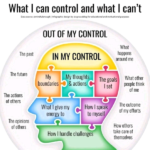
Since I now spend a good part of each day in my studio painting I have used stair-running and any other indoor opportunity (like flopping down on the rug to do yoga) to convince myself that I am getting enough exercise. Yet in the back of my head there is this niggling idea that I need to get outside… that “outside” is somehow critical to living well, which is probably why I was drawn to reading the latest two studies on mental health and green environments. “Pretty-pretty” amazing as Larry David would say.
You know this is serious when the insurance companies get involved. Follow the money, right? Still Philadelphia is to be commended for finding out if something mattered vs. apply band-aids.
Below is an excerpt of the article.
The Incredible Link Between Nature and Your Emotions
Outside article by Aaron Reuben
Imagine that the day you were born you were assigned a personal code, much like a Social Security number. You used this code when you enrolled in school, visited your doctor, filled a prescription, paid your taxes, got married, got divorced. But unlike a Social Security number, this code tracked your every move, inscribed in a massive system of interlocking data registers that could tell a researcher almost anything they wanted to know about your life. Such a personal identification system is the norm in Nordic countries, where the government provides a wide net of services for its citizens and consequently monitors their health, needs, and use of public services. This year, researchers in Denmark used this system to generate the largest and most comprehensive observational study of mental health and the environment yet undertaken: one million young adults, or everyone born in Denmark from 1985 to 2003 and still living there by their tenth birthday.
That small study would give birth to thousands of replications and expansions—and an entire movement in architecture.
The research team, led by Kristine Engemann and Jens-Christian Svenning at Aarhus University, combined long-term data on mental-disorder diagnoses from the Danish Psychiatric Central Research Register (which tracks inpatient and outpatient psychiatric care) with years of land-cover data derived from satellite imagery. They then asked if children raised in homes surrounded by more nature—specifically green vegetation—experienced better mental health as they grew into adolescents and young adults.
The researchers considered 16 distinct mental disorders, from schizophrenia and depression to anorexia and personality disorders. Based on prior evidence, they had reason to expect that rates of depression or anxiety might be lower among children raised in greener neighborhoods. As they reported in the proceedings of the National Academy of Sciences in March, they found, to their surprise, that children from greener neighborhoods were less likely to develop nearly any diagnosable mental illness.
Because those areas tend to be wealthier, the authors adjusted their findings for levels of family and neighborhood affluence, using the rich personal data available, under lock and key, to epidemiologists working in Denmark. They found that the link remained significant for 14 out of the 16 examined disorders. “We thought maybe we would see an interesting association within a band of disorders,” Engemann says. “But there was this general association that being surrounded by higher levels of green space in childhood was associated with lower risk.” This was regardless, she says, of where in Denmark children lived or how nice their neighborhoods were. “This was not a localized phenomenon.”
All told, children raised in the least green neighborhoods were 55 percent more likely to develop a mental illness than their peers who grew up in the greenest neighborhoods, regardless of social standing, the area’s level of affluence, or parental history of mental illness.
“This was a really powerful study,” says Ben Wheeler, an epidemiologist at the European Centre for Environment and Human Health, who designs large-scale studies of nature and health. “I was quite surprised by the scale of the effects.” A few years ago, Wheeler was involved in a similar, albeit smaller, study in the UK, monitoring the mental health of over 1,000 people as they changed residences across many years. His team found that when people are living in greener environments, they report better psychological well-being and less psychological distress, regardless of what else is going on in their lives or neighborhoods. The new study from Denmark suggests that this lower distress can be measured in actual mental illness averted. “Once you look at the numbers,” Engemann notes, “that adds up to quite a large number of yearly cases.”
Of course, correlation does not prove causation. That’s where the second study comes in, this time observing differences among people exposed to different levels of greenery by actually manipulating the environment on a city scale.
In a first-of-its-kind randomized control trial, published in the Journal of the American Medical Association Network Open in July 2018, researchers from multiple U.S. universities, funded by the National Institutes of Health and the Centers for Disease Control and Prevention, discretely altered the environment of an entire city to ask if changing the quality of open and green spaces results in a detectable shift in residents’ safety, criminal behavior, and mental health. “We presented this as how a randomized trial for a new drug would go—but for spaces and places,” recalls one of the project’s leaders, Charles Branas, chair of the department of epidemiology at Columbia University’s Mailman School of Public Health.
Branas and his colleagues selected 541 vacant lots across the city of Philadelphia and randomly allocated each to either receive no intervention, receive regular trash removal and mowing, or be turned into open pocket parks, with trees and a pleasant, short wooden-perimeter fence. Survey teams blind to the intervention were sent out to question residents at random before and after the great experiment, eventually interviewing nearly 450 people about their mental health. When the study was complete, its architects found that residents of neighborhoods where lots had been greened were much healthier psychologically than those whose lots had merely been cleaned. Around greened lots, neighborhood-level rates of feeling “depressed” dropped by 42 percent, feeling “worthless” by 51 percent, and having generally “poor mental health” by 63 percent.
As they reported in the proceedings of the National Academy of Sciences in March, they found, to their surprise, that children from greener neighborhoods were less likely to develop nearly any diagnosable mental illness.
“It’s a big finding,” says Eugenia South, the study’s lead author, a doctor of emergency medicine at Presbyterian Medical Center of Philadelphia and the University of Pennsylvania. “This is the first study to show that changing the environment prospectively can change the way people feel and improve their mental health.” She notes that interviewed residents were not always aware that a change had necessarily occurred in their neighborhood, which suggests that you may benefit from having nature around you even if you aren’t conscious of it.
For now, these recent studies provide suggestive but compelling evidence of nature’s lasting effects on our mental health. But one mystery still remains: just how precisely it calms us down. Does the magic happen through autonomic stress reduction, having a place to meet people and get active, or just by seeing something beautiful every day? “We still don’t know,” says Kathleen Wolf, a social scientist at the University of Washington who has studied this phenomenon for decades. While her younger colleagues call these new studies “game changing,” she can only shake her head in amazement at the recognition and funding that the field is finally getting.
But the lingering questions shouldn’t stop us from filling that free mental-health prescription by spending more time in natural settings regularly and intentionally. As we reported in Outside’s May issue, clinicians, public health departments, and even some health insurers are deciding that they don’t need to wait for more evidence before acting. Many are beginning to experiment with using the outdoors as the stage of the next great health intervention. Maybe you should, too.





























